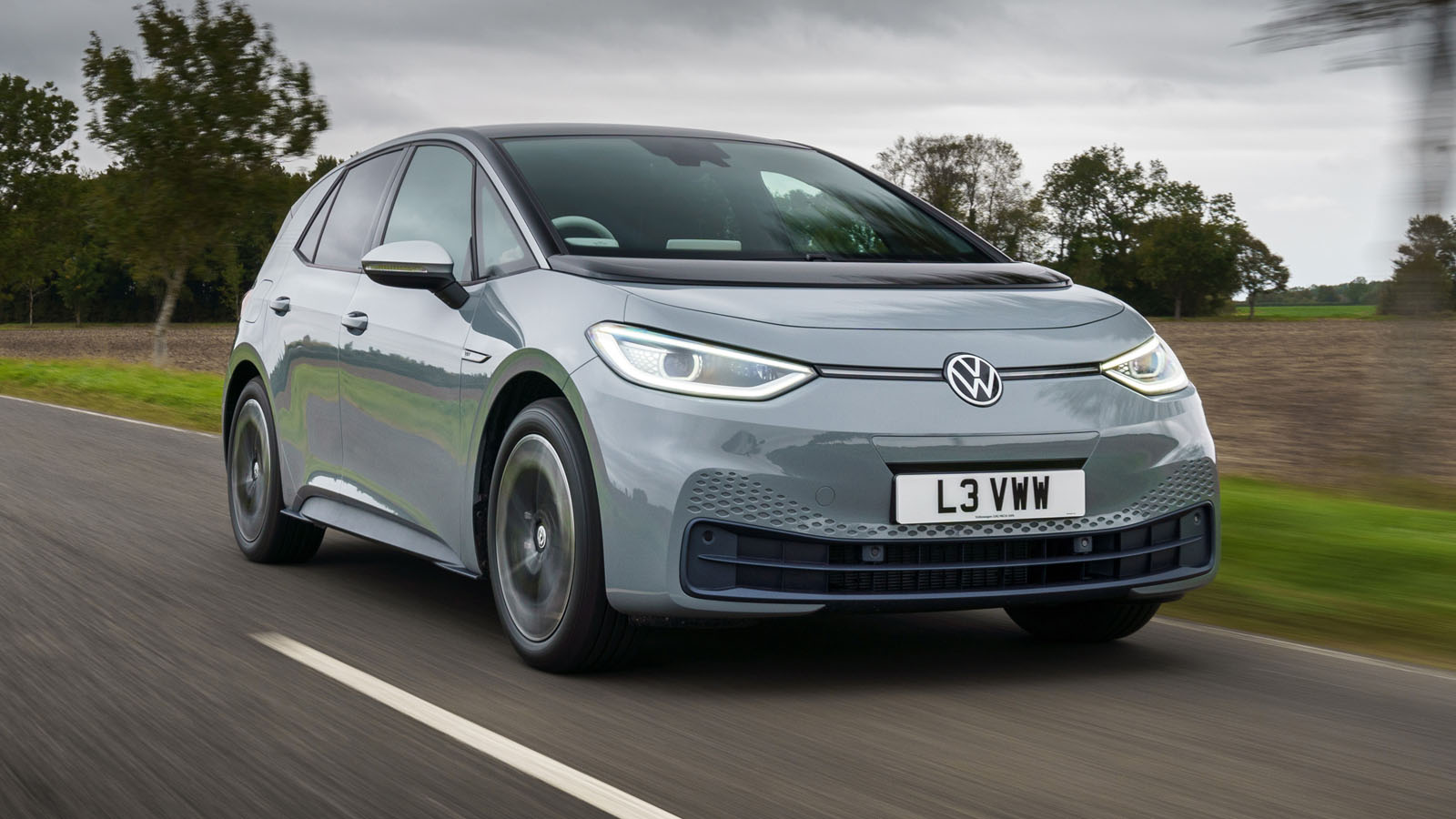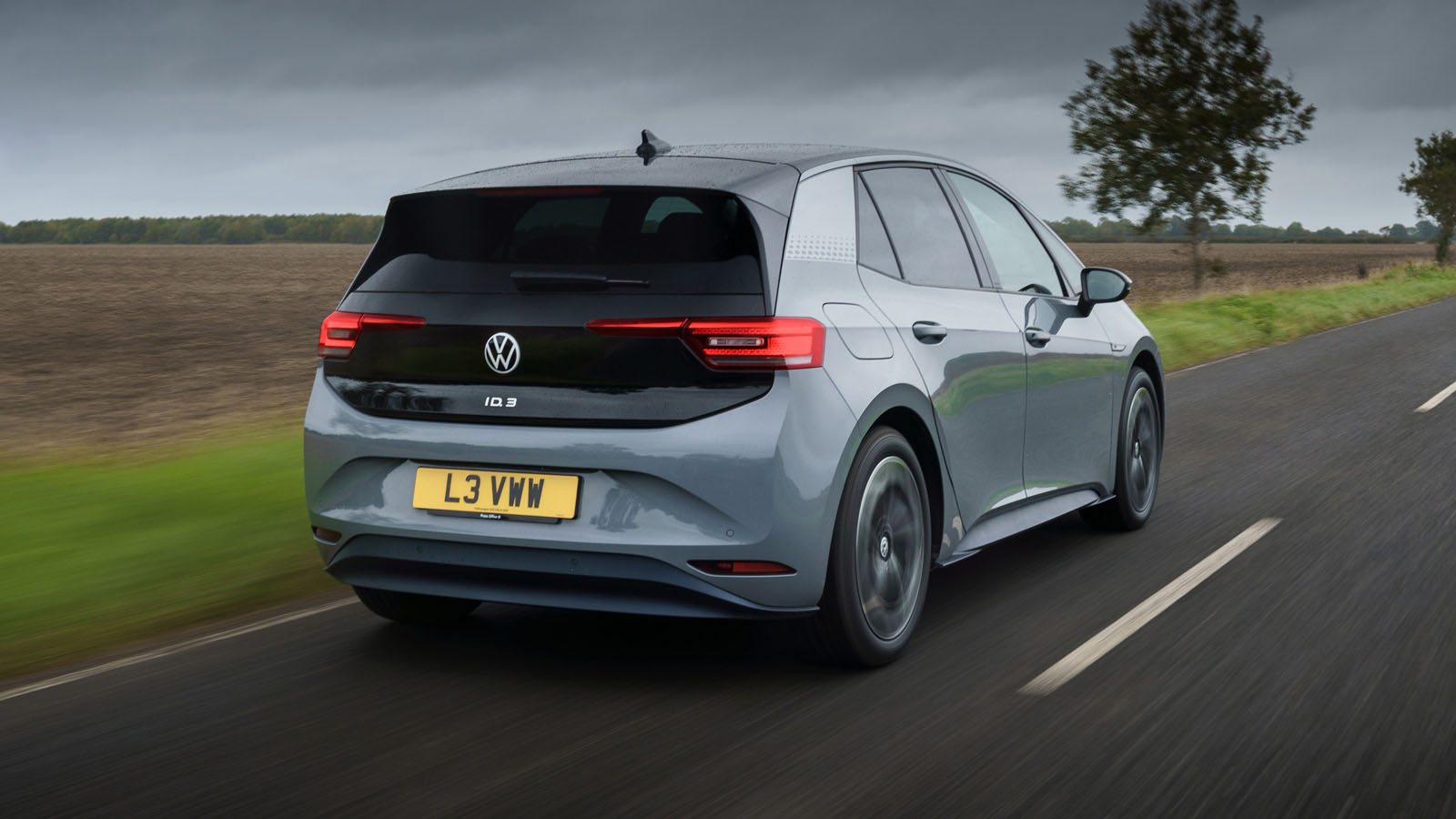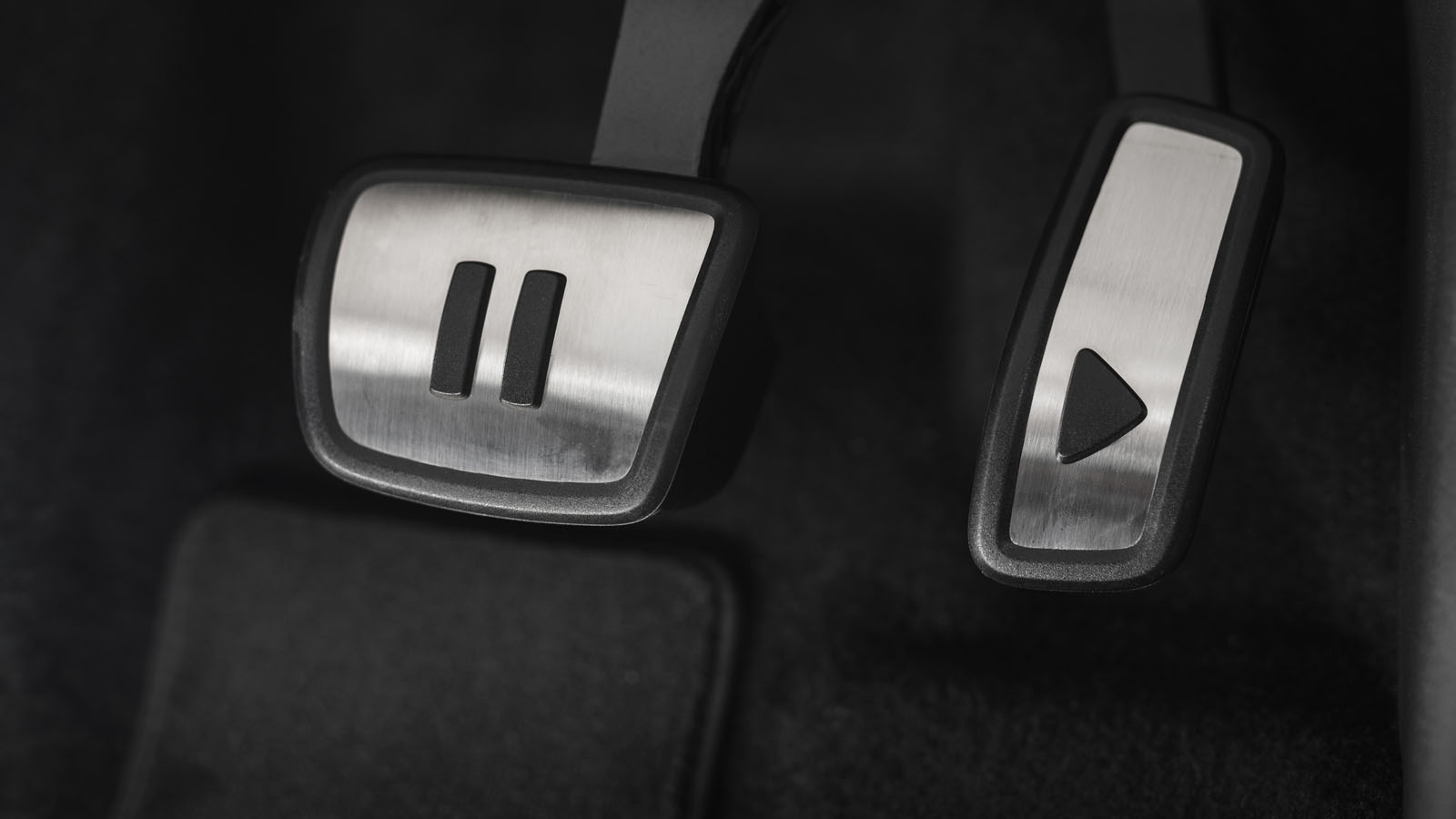
That’s a strange looking Golf…
Extremely funny, but a good point. This is the ID.3, the Golf’s future-leaning cousin, a sensible five-door family hatchback that runs entirely on electricity - so it’s a different shape, and has a different set of pros and cons. We’ll come to those in minute but first let’s set the scene, because the significance of this car is… significant.
It’s not the first electric car the VW Group has produced, but it is the first on a new modular MEB pure-electric platform that over the coming years will wear many, many different top hats across the sprawling VW Group portfolio. Get this, by 2030 the VW Group expects/hopes to have built 20 million cars on the MEB architecture. At current predictions, that’ll be 40 per cent of the world’s entire EV fleet.
Haven’t you driven it already?
We have, a brief dalliance in Germany a few weeks ago, but this is our first proper go in one over a number of days and on UK roads, just as the first trail-blazing UK buyers are taking delivery of their cars. We covered some proper distance in it too, London to Scotland and back, y’know, because why not.
Hope you had the big battery?!
Nope, all UK cars are fully-loaded ‘1st Editions’ to begin with, which means 201bhp from a single motor on the rear axle, and the middle-sized 58kWh battery, good for a WLTP range of 260 miles, says VW. Except that’s nonsense. On the motorway, radar cruise set to 70mph, we found it would do a tickle over 200 miles between charges, but playing chicken with the public charging network like that isn’t realistic, or good for your nerves, so you pull in every 170 miles-or-so if you’ve got big distances to cover.
Like all EVs, drive with a feather foot around town and it’s likely to get closer to that claimed figure, and smaller (45kWh, 205 miles claimed) and larger (77kWh, 340 miles) batteries will be offered when the series models come on stream in the next few months, but the point is you still need to take WLTP numbers with several pinches of salt.
The good news is the UK’s network of 50kW and the odd 100kW+ DC chargers is growing quickly, so with a little planning, and a lot of service station sandwiches, proper road trips are there for the taking… if you’ve got the patience. I recommend it because on the motorway, the ID.3 is a revelation: quieter and smoother than the Golf, tyre noise and wind noise supressed by its more slippery shape and relative slim rubber, it’s a joy to travel in.
It would be even better if you didn’t have to stop for an hour for every two and a half hours of motorway driving, but that’s nothing new for anyone that’s ever driven an EV: the numbers either stack up and slot into your lifestyle, or they don’t. Speaking of numbers, the 1st Edition we tested costs £35,215 after the Government grant, but once the full range of trims and batteries is available prices will go from just under £30k to just under £40k.
Top Gear
Newsletter
Thank you for subscribing to our newsletter. Look out for your regular round-up of news, reviews and offers in your inbox.
Get all the latest news, reviews and exclusives, direct to your inbox.
Is it actually fun to drive?
It is. Not in a pin-sharp, streaming with feedback sort of a way, but there’s a load of new and interesting sensations to enjoy. Its 0-62mph time of 7.3 seconds isn’t hot-hatch quick these days, but because it gives its best from 0-30mph it’s a rapid point-to-point, gap snaffling car around town, and adequately fast once you’re past 50mph. Either way there’s always a satisfying surge and faint sci-fi whistle from the motor when you plant your foot.
But here’s the thing, in my experience you tend to drive electric cars in a different way, nursing them around trying to conserve your charge whether you’ve got lots of miles to cover or not. A bit like a long-distance foot race you tend to start slow, then when it’s clear you’ll make your destination comfortably, you can enjoy smashing the throttle here and there.
Although rear-wheel drive entirely for packaging reasons, and to free up the front wheels for a brilliantly tight turning circle, it actually feels rear driven, hunkering down slightly under throttle and pushing you with traction and real punch out of roundabouts and tighter corners. The steering is light and numb, but uncorrupted by torque steer so you can trust it (unless you’ve forgotten to turn off the infuriating lane-keep assist that keeps trying to wrestle the wheel out of your hands) while the brakes (drums at the rear!) do a good job of blending regen and actual friction for consistent feel under your foot, unless you really stand on them and you’re suddenly aware of the 1,800kg weight.
All UK 1st editions comes as standard on 19-inch wheels, although 20s will be an option later, but our experience was never anything other than comfortable. There is a bit of Germanic firmess to keep body roll in check, but to be honest having the chocolate bar battery slung between the wheels sets the car up for flat, settled cornering even before the chassis engineers get their spanners on it. There are three driving modes, but you’ll probably shun ‘Sport’ and spend most of your time in ‘Comfort’, with brief trips to ‘Eco’ when remaining range is looking a bit spicey. With no gears to change and no multiple regenerative braking modes, just on or off, it’s swift, unruffled and ridiculously simple to drive.
Guessing it flies under most people’s radars?
You’d think so, wouldn’t you, with its slightly blobby, amorphous styling, but in fact it got more attention than Posh Spice in Lidl. Although it’s got pretty much the same footprint as a Golf on the road, the longer wheelbase and stubby front and rear overhangs mean there’s more space inside, and it look curiously futuristic from the outside. VW clearly didn’t want to rock the boat with this one and I reckon it’s pitched just right: different enough to intrigue, not mad enough to repel.
Everyone knew what it was, wanted to have a look inside, to know how fast it was, how far it went and whether I’d recommend one. The overall sense was electric cars now have the attention of the British public and many are teetering on the edge preparing to make the switch, just searching for some final reassurance that it’s OK to take the leap.
What about the inside then?
It’s a cracking space to spend time in, it really is. Slightly wider and taller than a Golf, it just feels airier… and as a consequence, more useful. There are nets and slots and holders and bins everywhere you look, front and back. The dash is a multi-layered trick on the eye, with the wheel just ahead of the column-mounted digital info panel, then to your left the 10-inch central screen, tilted toward the driver and proud of a dashboard that seems to go on forever, until it meets the windscreen and A-pillars at some point in the far distance. Rear passengers sit higher than in the front, so the view out’s good, as is the legroom and head room and the deep 385-litre boot (1,267-litre with the seats down) – just a few litres more than you get in a Golf. If you have two kids or less and don’t regularly need to transport large pieces of furniture, it feels like all the space you’ll need.
So the interior is an untarnished triumph?
Not exactly. If you’re coming from a Tesla, the build quality will astound and amaze you, but there’s still some pretty cheap-feeling plastic on the door tops and glove box. Fortunately, that’s off-set with softer-touch materials where you’re more likely to make contact with the car. And then we get to the same entirely buttonless interface as the new Golf mk8.
Jettisoning all buttons suits the ID3’s techy outlook better, but it doesn’t get around the fact that it’s a massive pain in the arse. Things that would normally be a click, a scroll or a push are several jabs into sub-menus to locate. To begin with it’s downright dangerous trying to find what you want while staying on the road, but as we spent more time with it and learned the rat-runs, it became easier and less hazardous to control. We definitely need a long-term test with the system to see if its genius emerges over time, or if it continues to grate.
Sounds like a deal-breaker?
No, I wouldn’t go that far, just a fly in the ointment, and my personal take. Anyone that’s grown up with an iPad glued to their face will probably love it. Anyway, just as the Golf is the answer to 95 per cent of most people’s requirements, the ID.3 is good enough to do the same in the world of EVs. If you’re interested in an electric car and don’t have Taycan money, this has to be on your consideration list. It won’t set your world on fire, but it won’t let you down either. Me? I’m holding out for the camper.
Score: 8/10
Featured

Trending this week
- Top Gear's Top 9
Here are nine of the coolest car nicknames






